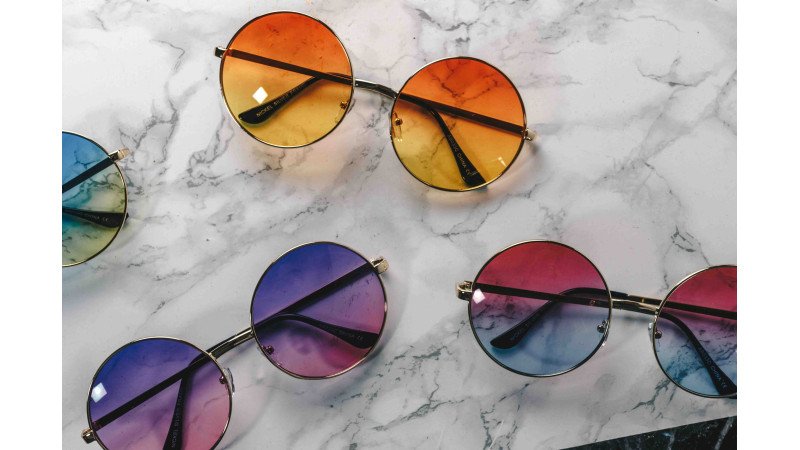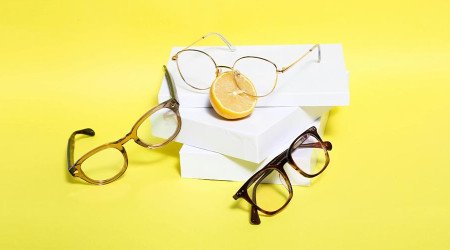The Color Code of Sunglass Lenses: Your Guide to Eye Protection

When sunlight gets intense, sunglasses aren’t just a style statement—they’re essential armor for your eyes. But did you know lens colors hold a functional secret? Each tint is engineered for specific light conditions and activities. Choosing wisely can transform your visual clarity and comfort.
Core Rule: UV Protection Comes First
Critical reminder: Lens darkness ≠ UV protection. Quality sunglasses must block 100% of UVA/UVB rays (labeled UV400 or 100% UV protection). This prevents long-term damage (cataracts, macular degeneration). Lens color affects:
Visible light transmission (how dark lenses appear)
Contrast enhancement (sharpening details)
Color perception (true-to-life vs. altered hues)
Decoding Lens Colors: Functions & Best Uses
Gray Lenses: The All-Rounder
Function: Evenly reduces brightness across all colors with minimal color distortion.
Best for: Driving, beach days, bright sunshine, water sports. Ideal for golf or cycling where color accuracy matters.
Perks: Fights glare and eye strain during prolonged wear.
Green Lenses: Comfort Meets Contrast
Function: Balanced light filtering with slight contrast boost. Gentle on eyes, partial red-light reduction.
Best for: Everyday use, tennis, hiking, medium-to-bright light.
Perks: Superior visual comfort for extended outdoor sessions.
Brown/Amber Lenses: Contrast Kings
Function: Blocks blue light, dramatically boosting contrast/depth perception. Warms your view (enhances reds/yellows, mutes blues).
Best for: Overcast days, snow sports (sharpens terrain), golf (spots balls on grass), driving in fog/rain.
Perks: Cuts haze and blue-light scatter for sharper vision in flat light.
Yellow/Gold Lenses: Low-Light Champions
Function: Maximizes light intake + contrast by blocking blue light. Creates a bright amber tint.
Best for: Dawn/dusk, fog, cloudy skies, indoor sports (squash), shooting clays. ⚠️ Avoid bright sun—insufficient protection.
Perks: Unbeatable clarity in dim conditions.
Rose/Ruby Lenses: Detail Enhancers
Function: High contrast, especially against green backgrounds (e.g., golf balls on fairways). Reduces eye fatigue.
Best for: Cloudy-day golf, skiing (highlights snow contours), long-focus tasks. Some use for screen glare reduction.
Perks: Improves depth perception during demanding activities.
Special Lens Tech
Blue/Purple Lenses: Mostly fashion-focused. No contrast/UV advantages. ⚠️ Caution: May allow harmful blue light transmission. Not driving-safe.
Mirrored Coatings: Reflective layer (silver/blue/gold) added to base lenses. Reflects extra glare (water/snow/roads) without changing base lens function.
Photochromic Lenses: Transition lenses (gray/brown) that darken in UV light. One pair for indoors + outdoors.
Polarized Lenses: ⭐ Must-Have Tech
Not a color—works with lens tints (gray/brown/green best). Blocks blinding horizontal glare from water/wet roads/snow. Essential for: Driving, fishing, snow/water sports.
Your Activity-Based Guide
|
Scenario |
Recommended Lens Colors |
Key Tech |
|
Daily wear / Driving |
Gray • Green |
Polarized |
|
Golf • Baseball |
Brown • Rose |
Polarized (optional) |
|
Water/Snow Sports |
Gray • Green • Brown |
Polarized + Mirrored |
|
Dawn/Dusk • Fog |
Yellow • Gold |
— |
|
Skiing (sunny) |
Dark Gray/Green |
Polarized + Mirrored |
|
Skiing (flat light) |
Yellow • Rose • Amber |
— |
|
Digital Eye Strain |
Light Yellow (blue-light filter) |
— |
Smart sun protection is clearer in color. Gray guards reality, brown defines depth, gold pierces gloom. Next time you grab shades, ask: Do I need a glare shield or a detail detector? Your eyes will thank you for the precision.









Leave a comment